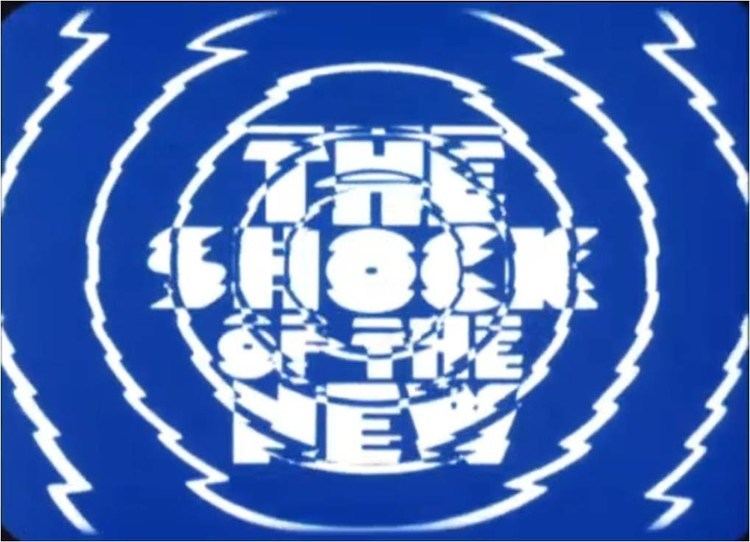8.6 /10 1 Votes8.6
Number of episodes 8 | 8.5/10 IMDb Release date 1980 Number of seasons 1 | |||||||||||||||||||||||||||||||||
 | ||||||||||||||||||||||||||||||||||
Similar How Art Made the World, The Private Life of a Masterpiece, Dan Cruickshank's Adventur, Dreamspaces, Fake or Fortune? | ||||||||||||||||||||||||||||||||||
The shock of the new ep 1 the mechanical paradise
The Shock of the New is a 1980 documentary television series written and presented by Robert Hughes produced by the BBC in association with Time-Life Films and produced by Lorna Pegram. It was broadcast by the BBC in 1980 in the United Kingdom and by PBS in 1981 in the United States. It addressed the development of modern art since the Impressionists and was accompanied by a book of the same name; its combination of insight, wit and accessibility are still widely praised. In 2004 Hughes created a one-hour update to The Shock of the New titled The NEW Shock of the New.
Contents
- The shock of the new ep 1 the mechanical paradise
- Series outline
- 2004 update
- Book
- Video releases
- References
Series outline
The series consisted of 8 episodes each one hour long (58 min approx). It was re-broadcast on PBS in the United States. In the three cases, where PBS changed the titles, they are given in square brackets below.
- Mechanical Paradise - How the development of technology influenced art between 1880 and end of World War I. Cubism and Futurism
- Cezanne, Picasso, Braque, Gris, Leger, Delaunay, Marinetti, Boccioni, Balla, Severini, Picabia, Duchamp
- The Powers That Be [Shapes of Dissent] - Examining the relationship between modern art and authority. Dada, Constructivism, Futurism, Architecture of Power
- World War I and industrialised death, Exile and intellectuals as a class, Lenin, Tzara, Janco, Arp, Ball, Duchamp, Kirchner, Ernst, Höch, Dix, de Chirico, Hausmann, Grosz, Gabo, Tatlin, Moholy-Nagy, Lissitzky, Rodchenko, Marinetti, Prampolini, Speer, Piacentini, Lincoln Center, Kennedy Center, Albany Mall, Picasso's Guernica, Tinguely
- The Landscape of Pleasure - Examining art's relationship with the pleasures of nature, and visions of paradise 1870's to 1950's. Impressionism, Post-Impressionism, Fauvism
- Fête champêtre, Titian, Giorgione, Jean-Antoine Watteau, Gainsborough, Bourgeoisie, Seurat, Claude Monet, Paul Cezanne, the vivid colours of the South, Paul Gauguin, Andre Derain, Maurice de Vlaminck, Henri Matisse, Pierre Bonnard, Braque, Picasso, late Matisse
- Trouble in Utopia - Examining the aspirations and reality of modern architecture. International Style, Art Noveau, Futurist architecture, Urban planning
- Johnson, Boullée, Garnier, Chiattone, Sant'Elia, Melnikov, Rodchenko, Leonidov, Sullivan, Labrouste, Berg, Mies, Le Corbusier, Chandigarh, Werkbund exhibition 1927, Bauhaus, Gropius, Behrends, De Stijl, Rietveld, van Duesberg, Mondrian, La Defense, Pruitt–Igoe, Costa, Niemeyer, Brasilia
- The Threshold of Liberty - Examining the surrealists' attempts to make art without restrictions.
- May 1968, Breton, Ernst, de Chirico, Böcklin, Ducasse, Child Art, Madness, Rousseau, Cheval, Miro, Gaudi, Dali, flea market, Jean, Brauner, Paalen, Oppenheim, Man Ray, Margritte, de Sade, Catholicism and sexual taboo, Bellmer, Cornell, Pollock, Rothko, Gorky, Hoffmann, 1945 liberation, Christo, Burden, Hippies and self-expression, Vietnam War, Cult of Youth
- The View from the Edge [Sublime and Anxious Eye] - A look at those who made visual art from the crags and vistas of their internal world. Expressionism
- van Gogh, Munch, Toulouse-Lautrec, Gauguin, Kirchner, Kokoschka, Soutine, Bacon, de Kooning, photographical evidence of the Holocaust, Marc, Klee, Kandinsky, Brancusi, Rothko, Pollock, Motherwell
- Culture as Nature - Examining the art that referred to the man-made world which fed off culture itself. Pop Art and Celebrity
- O'Keeffe, Davis, Rauschenberg, Schwitters, Johns, Hamilton, the influence of television, Warhol, Liechtenstein, Rosenquist, Katz, Las Vegas as a single "lousy" artwork, Oldenburg, McLuhan and quantity over quality
- The Future That Was [End of Modernity] - The commercialisation of Modern Art, the decline of modernism, and art without substance. Land art, perfomance art, and body art
- Heizer, MoMA and rich patrons, SoHo and urban renewal, Pompidou Centre and the changing uses of art, da Panicale, art as public discourse, the Salon system, the avantgarde and the bourgeoisie, Courbet, Andre, Judd, public and private, Segal, Kienholz, Frankenthaler, Louis, Noland, Stella, Riley, fashion, the art market, Brisley, Samaras, Rainer, Hockney, Beuys, de Maria
2004 update
Book
The book of the series was published in 1980 by the BBC under the title The Shock of the New: Art and the century of change. It was republished in 1991 by Thames and Hudson.
Video releases
The televised edition of The Shock of the New is posted on the internet and is published as a set of DVDs.
